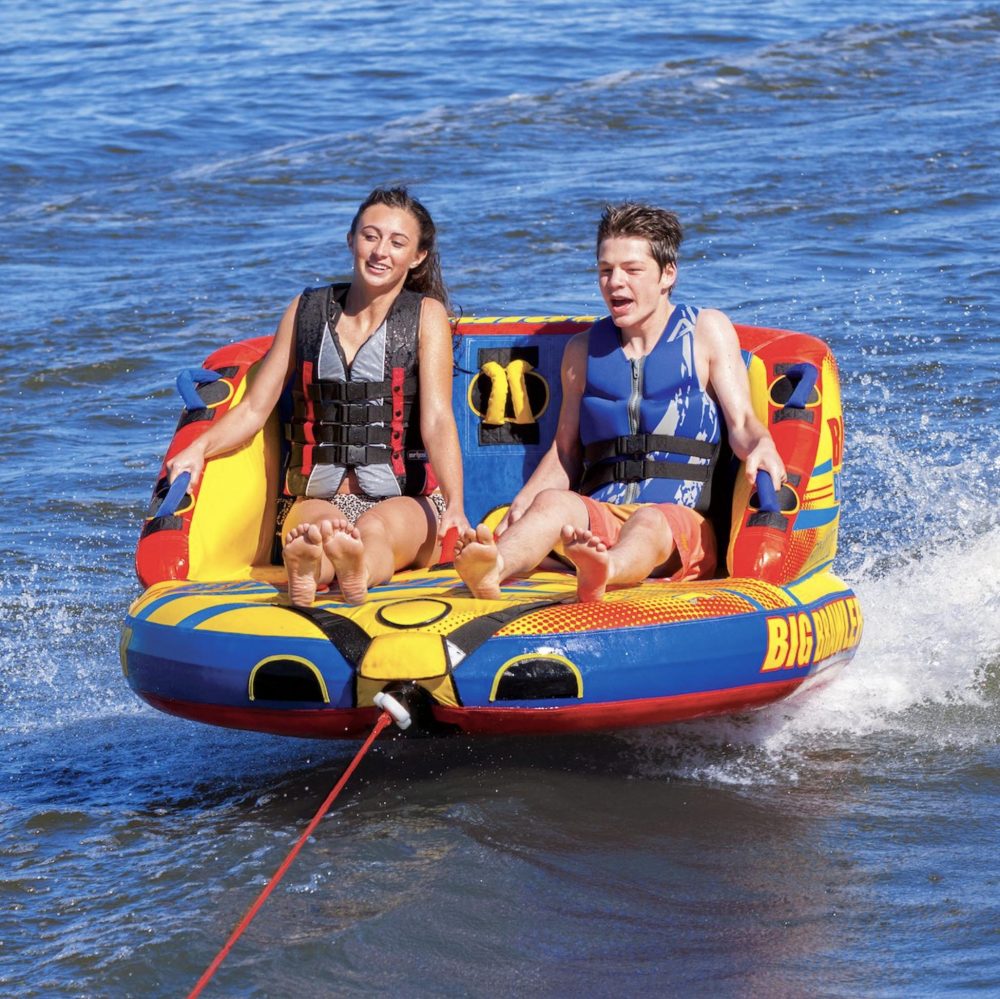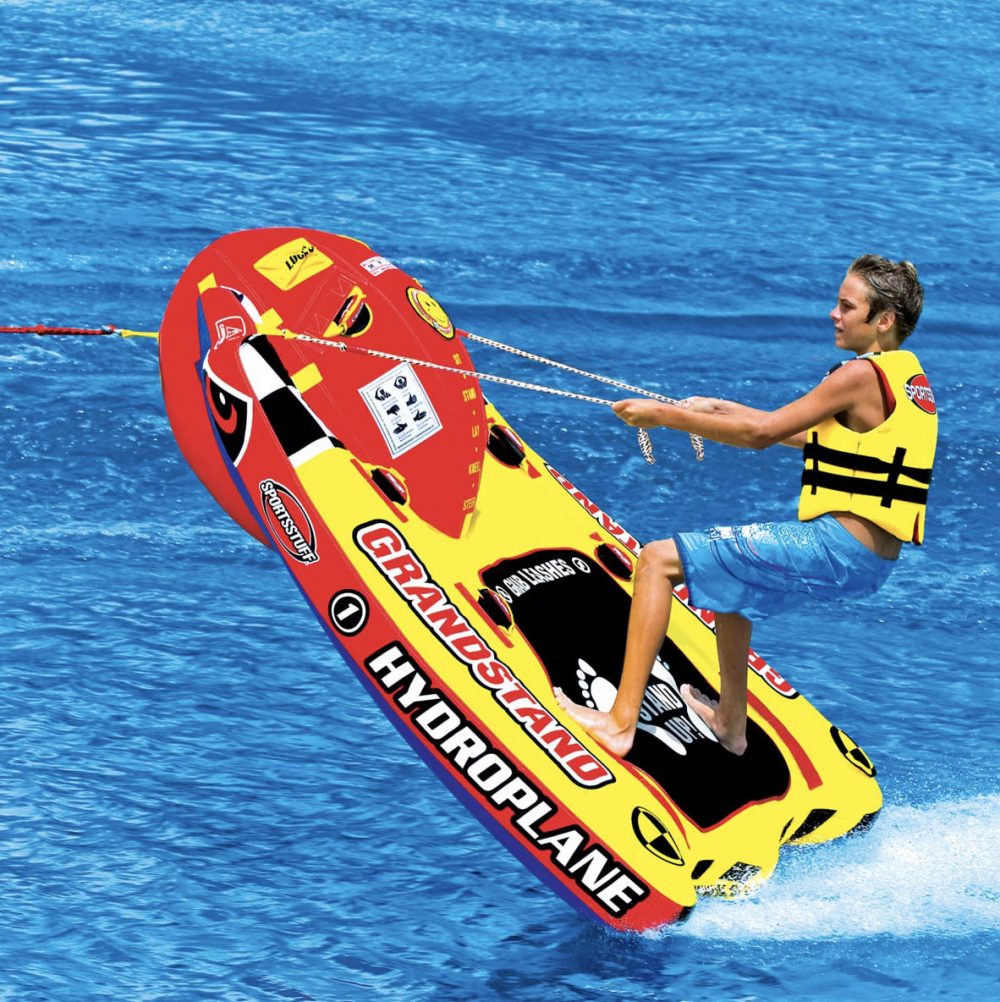Safe Family Tubing
Tubing is simple and fun, and by following these rules it will also be safe for kids of all ages.
True story: An old acquaintance of mine had to have one lung removed because of a boating accident he was involved in when he was a child. He was being towed on a tube and the driver was slaloming the boat left and right to whip the riders on the tube. The rope broke and he slammed into a dock—wow, grim lead to a story on one of most fun things you can do with your kids on a boat this summer. Well, it is a bit gruesome, but it demonstrates that Murphy’s Law still applies even all you’re out to do is have fun, and tubing is genuinely good fun.
But here’s the thing, like nearly any watersport, you can get hurt doing it, so being mindful of the consequences of negligence is the first step to participating in the activity safely. Towed sports are fun, and we can keep it that way by paying attention to the finer points. Tubing can be fun for kids of all ages, and it's safe as long as certain precautions are followed.
Tubing can be fun for kids of all ages, and it's safe as long as certain precautions are followed.
Tubing is also relatively simple. There’s no real learning curve involved, no commitment to mastering the technique, not even any real coordination required by the rider. You just sit or lie across its air-filled surface and hang on for the ride. And without a doubt, it’s fun. Haul out the tube and you’re almost guaranteed to elicit giggles from the kids, both big and small.
Tubing, however, isn’t all just fun and games. It requires a healthy dose of common sense, from both the boat and PWC driver as well as the participants, to ensure everyone’s safety. Just ask an insurance agent or ER doctor; chances are they’ll tell you that plenty of serious injuries arise from this seemingly benign activity every summer.
Suddenly scared? Don’t be. Avoiding problems is simply a case of using your head, limiting the risks, and following these practical tips.
Have good equipment
Tubes and ropes undergo a lot of stresses when used a lot over the course of a summer. The weight of the rider, the drag of the water and power of the boat create a lot of tension on all the points of connection and everything in between. I’ll bet if you measured the loads, you’d be blown away by what you saw.
For starters, check tow ropes for fraying and photo-aging. A driver has some measure of control over a tube being towed. If that rope breaks, he or she has no control.
Before your season begins, check the gear for signs of wear that could lead to breakage. Ropes aren’t expensive. If it looks marginal, toss it and get a new one. That $40 or so dollars is cheap insurance and peace of mind.
Likewise, most tubes and other inflatable tow toys have a fabric cover of some kind that often provides the point of connection for the tow rope. Be sure to check that connection point for worn or loose threads, tears and other signs of stress that might indicate it won’t last through the summer. In a lot of cases, you can keep the tube and just get a new cover, which is less costly.
 Make sure the inflatable is blown up to the proper tension, and that any protective cover is firmly in place.
Make sure the inflatable is blown up to the proper tension, and that any protective cover is firmly in place.Have proper safety gear
At a bare minimum, all towed riders need to wear a personal flotation device that fits properly. A small child in an adult’s PFD could slip out of it and not have any flotation at all. Size them right and insist they wear them.
Also, rash guards are a big plus, and some are made with long sleeves. Kids’ arms and chests can be rubbed raw during a day of tubing. Rash guards add a small measure of protection against days of discomfort after the weekend is over.
Likewise, cover with waterproof sunscreen that isn’t covered with clothing. It’s easy to lose sight of the rule to “apply and reapply” when you’re out having fun.
Match the riders' ages with the toys
If you look at Overton’s website or Bart’s or West Marine or wherever you get your water toys, you know you can get some outlandish toys for summer fun. From tubes that can get airborne to devices that enhance wakes, the market is ripe with toys and products that are far more “extreme” than ever.
Those toys are great for teens with strong muscles and an appetite for daredevil antics. They are not appropriate for a 6-year-old. The first time your child gets hurt on a tube behind the boat could be the last time he or she wants to go boating.
 Choose a proper towrope, and make sure it is properly connected.
Choose a proper towrope, and make sure it is properly connected.Find open water
Boat traffic is a fact of life on the water during the busy summer months. It’s largely unavoidable. But if you can find a patch of empty water to call your own while you’re dragging the kiddies around on a tube, so much the better. It’s safer for them and they’ll have more fun.
Know the riders' limits
This is a bit of a challenge, because kids can be squealing with delight and at the same time be tired and sapped of energy. So, if they’ve been riding the tube all day, dial it back during their last ride of the day. If they’re muscles are so tired and sore they can’t hang on, you are more likely to have something happen you’d rather not have happen.
 Choose a speed appropriate to your occupant’s age and fears.
Choose a speed appropriate to your occupant’s age and fears.Practice 360-degree awareness
This one comes to us courtesy of motorcycle riders the world over. When you practice 360-degree awareness, you begin to develop a keener sense of not only what’s going on around you, but also what might happen in the coming moments. A PWC might dart out of the corner of your eye into the path of your boat. A water skier might decide to end his ride, toss the rope and ski across the stern of your boat headed for shore because he didn’t see the tube being dragged behind you. Practicing 360-degree awareness is the best way to keep everyone safe, and some of those people might not even be in or behind your boat.
For more watersports action, check out the following:
- How to Water Ski
- How to Kneeboard
- How to Wakeboard
- How to Wakesurf
- How to Stand Up Paddle Board (SUP)
- Essential Tow-Boat Glossary
Editor's Note: This article originally published in July 2010 and was updated in May 2018, then May 2020.












